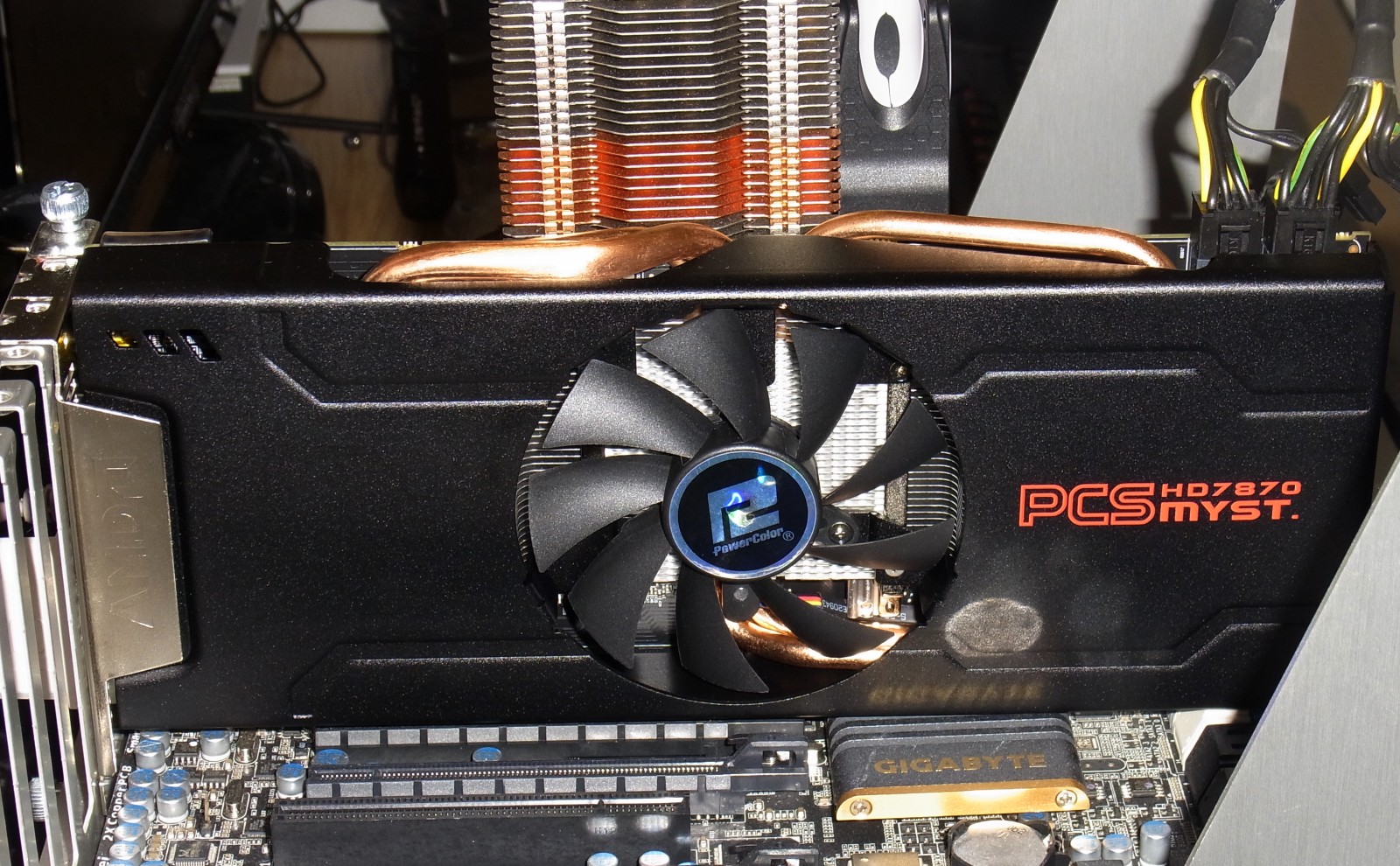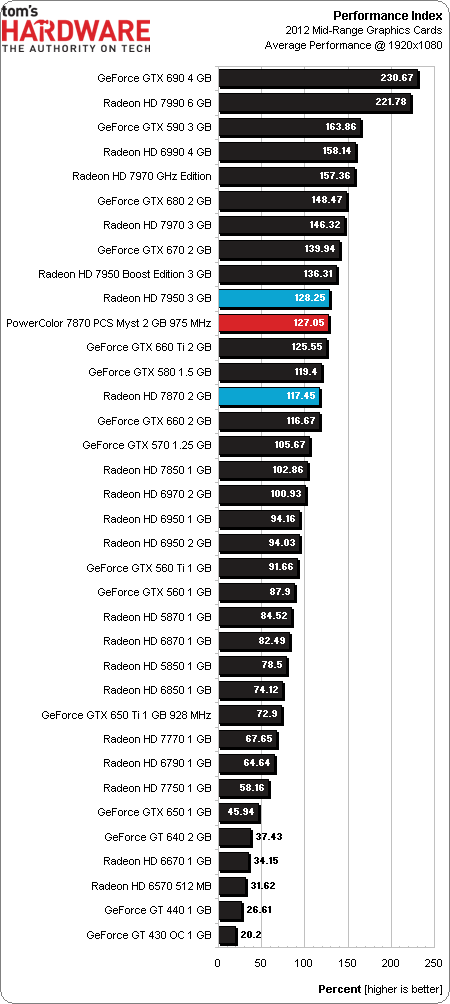Tahiti LE, Tested: PowerColor's HD7870 PCS+ Myst Edition
Today, we look at a card between two worlds. Despite a model number that suggests Pitcairn lineage, this board is based on AMD's Tahiti GPU. Does it behave more like its namesake, or the powerful engine actually under its hood? Read on for more!
Test Setup And 2012 Chart Placement
We’re running the usual benchmarks on the benchmark system we introduced last year for generating our graphics card charts (check out our 2012 Graphics And GPGPU database for comparative results). The only thing different this time around is the graphics card we're testing.
| CPU | Intel Core i7-2600K (Sandy Bridge), 3.4 GHz Stock, Overclocked to 4.5 GHz (45 x 100 MHz), LGA 1155, 8 MB shared L3 Cache, Hyper-Threading enabled, Power-savings enabled |
|---|---|
| CPU Cooler | Prolimatech SuperMega + Noiseblocker eLoop |
| Motherboard | Gigabyte Z68X-UD7 B3 |
| RAM | 2 x 4 GB Kingston HyperX DDR3-1600 |
| System Drive | Kingston V100+ 256 GB (SSD) |
| Power Supply | Corsair AX1200i, 80 PLUS Platinum, 1,200 W |
| Operating System | Windows 7 x64 SP1 |

Cumulative Benchmarks And Placement In Our 2012 VGA Charts
In order to generate an overview of performance, we plugged the PowerColor HD7870 PCS+ Myst Edition into our 2012 VGA charts using the mid-class performance index as the reference. It’s especially interesting to see how the card stacks up to the Pitcairn-based Radeon HD 7870, as well as the Radeon HD 7950.

According to the cumulative benchmark numbers, PowerColor's HD7870 PCS+ Myst Edition’s performance is closer to that of the Radeon HD 7950 than the Radeon HD 7870. With its already-high base core clock rate and accelerated Boost setting, this new card nearly matches the first-gen Radeon HD 7950, which didn't include Boost functionality.
This makes the HD7870 PCS+ Myst Edition almost a steal at $240. You’d have to spend at least $60 more for a Radeon HD 7950, and you wouldn’t have very much additional performance to show for it. Now, you’re probably wondering if this is too good of a deal to be true. We’ll just have to keep testing to find out.
Get Tom's Hardware's best news and in-depth reviews, straight to your inbox.
Current page: Test Setup And 2012 Chart Placement
Prev Page Packaging, Features, And Pictures Next Page Memory Bandwidth Analysis-
mayankleoboy1 Isnt this review quite a bit late ? IIRC, the card came ~1.5 months back...Reply
If it cant CFX with a 78xx, it has no right to be called a 7870+ . Marketing name fail +1.
The chip by itself is fine, though.
-
EzioAs That's quite a short review. It's not anything I haven't looked at other sites. Anyway, at the current price, I really have to agree the 7870XT (Tahiti LE) are excellent cards.Reply -
EzioAs Reply10449154 said:If it cant CFX with a 78xx, it has no right to be called a 7870+ . Marketing name fail +1.
I agree. AMD has already establish good model naming scheme (X900 for high-end gaming, X800 for mid-range, X700 for low end gaming) after the 6000 series. To be honest, I say it's stupid not to call this chip the HD7930. -
hero1 Azn CrackerOr maybe the 7950 LE since its pretty much the same card just slower.Reply
I agree with you on this one. Someone need to give these guys a call and tell them how it is. What a load of bs on their naming scheme. I would absolutely call this 7950 SS or LE! -
FormatC The frametime thing (in some games) was gone (more or less) with the latest drivers and I think that AMD will handle the memory now a little bit better ;)Reply -
shikamaru31789 If only some other manufacturers were making these, Power Color's cooling solution isn't that good, 37.8 decibels while Gaming is not quiet enough for me.Reply -
EzioAs Reply10449161 said:If only some other manufacturers were making these, Power Color's cooling solution isn't that good, 37.8 decibels while Gaming is not quiet enough for me.
Sapphire has one too, I believe -
shikamaru31789 EzioAsSapphire has one too, I believeYeah, I just now noticed it on Newegg. Not sure why I didn't notice it before, based on the reviews it's been on there awhile. Too bad it costs $20 more than Power Color's. Still a good deal even at $260, since this review indicates that it's almost as fast as the much more expensive 7950's.Reply